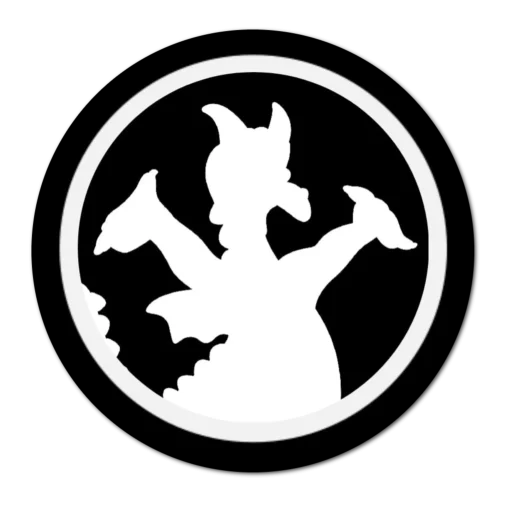Twenty years ago, the Star Wars saga fulfilled the promise of a storyline which was over a quarter century in the making – the climactic showdown between Anakin Skywalker and Obi-Wan Kenobi, resulting in the creation of Darth Vader as we know him. The final installment of a three-film origin story culminated with Star Wars: Episode III – Revenge of the Sith, released on May 19, 2005. With the 20th anniversary re-release of the film in theaters, Revenge of the Sith is giving Star Wars fans of a new generation the chance to witness the most pivotal moment in the history of a galaxy far, far away on the big screen.
To celebrate the 20th anniversary of the “birth” of an iconic cinematic villain, let’s enjoy five(ish) fun facts about Star Wars: Episode III – Revenge of the Sith.
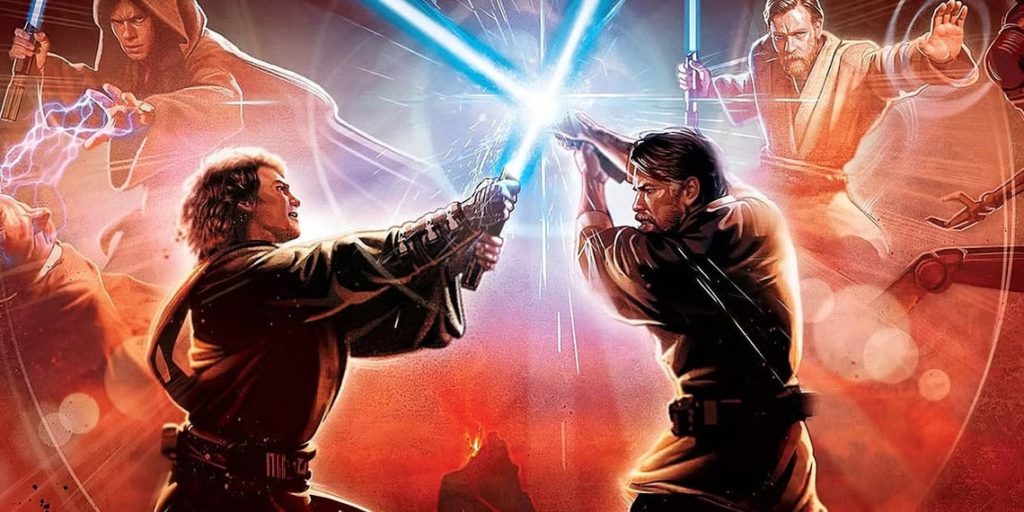
The Return of Revenge
The battle between Jedi and Sith is classic “good vs. evil” storytelling, and it goes all the way back to 1977, when Star Wars creator George Lucas introduced the world to Star Wars: Episode IV – A New Hope (commonly referred to as the “original Star Wars”). When Lucas was workshopping titles for the third installment of the original trilogy (Episode VI), he had tentatively settled on the subtitle Revenge of the Jedi. However, Lucas wisely realized that revenge was not an appropriate attitude for a Jedi, and decided instead to name the film Return of the Jedi.
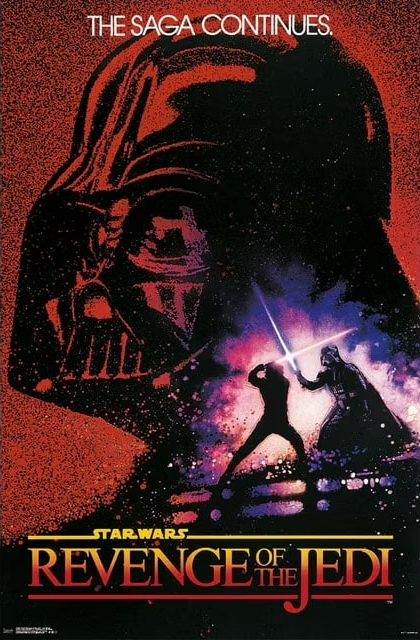
Lucas’ keen understanding of Jedi vs. Sith nomenclature came full circle when he subtitled Episode III Revenge of the Sith, which fit the theme of the film much more appropriately than it did for Return of the Jedi.
General Grievous
Every Star Wars film introduces a new striking character. A New Hope introduced the imposing Darth Vader. The Phantom Menace gave us the black and features of Darth Maul. Return of the Jedi gave us our first look at Jabba the Hutt. Revenge of the Sith brought audiences the humanoid cyborg General Grievous.
Despite only logging six minutes of screen time, General Grievous immediately became a fan favorite. George Lucas decided to make Grievous a cyborg to foreshadow Anakin’s physical conversion to Darth Vader’s infamous biomechanical suit at the end of the film.
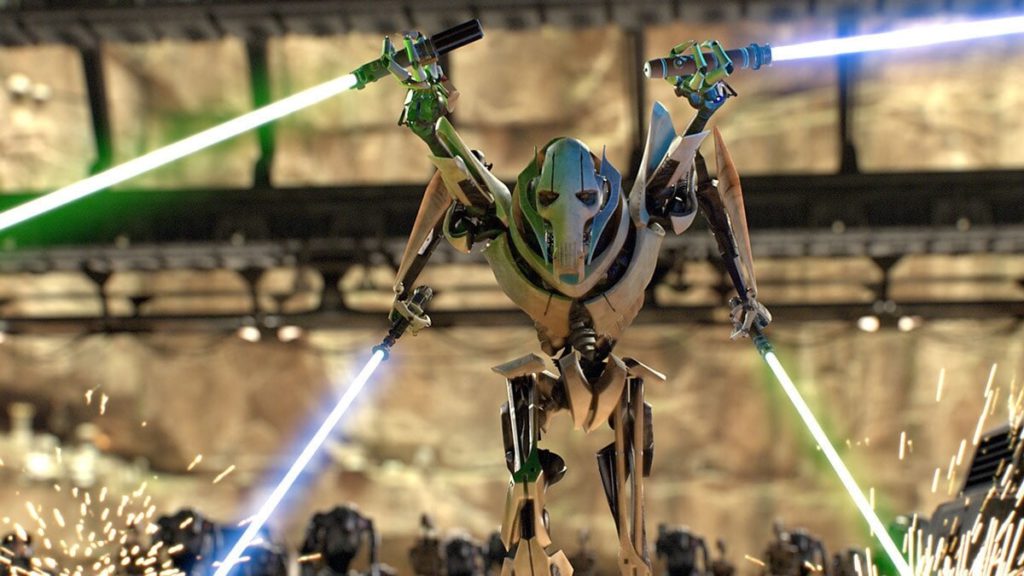
According to the story “The Eyes of Revolution” from the Star Wars: Visionaries comic series, Grievous was originally an organic reptilian humanoid native from the planet Kalee. The imposing cyborg has two arms with six fingers – including two opposable thumbs – on each hand. When Grievous performs his signature parlor trick and splits each arm in two, he is still able to wield a lightsaber in each of four hands.
Despite his imposing mechanical features, Grievous is physically vulnerable, carrying exposed biological organs beneath his skeletal shell and sporting a nasty chronic cough. Fun Fact: The sound of General Grievous’ cough was provided by George Lucas himself. After developing a bad cough during production, Lucas had it recorded and used it as Grievous’ nagging affliction.
Are you wondering if General Grievous is a Sith Lord? The short answer is no. However, according to Star Wars legend, he does have some talented blood. When Grievous was constructed, he was given the blood of Sifo-Dyas, Jedi master who had a high midichlorian count. With this connection to the Force, General Grievous was able to be trained in lightsaber combat by Count Dooku, despite the fact that he is not Force-sensitive.
Fun Fact: As far as Dark Side villains go, General Grievous is the one who does not have a red lightsaber. All of his sabers or Light Side colors, since he keeps those of all the Jedi he killed.
The Battle on Mustafar
The epic duel on Mustafar between Anakin and Obi-Wan is the payoff of over a quarter century of legend and anticipation, since echoes of the showdown were first spoken in 1977’s Episode IV – A New Hope. The production cost and effort for the film’s climactic scene were gigantic – taking around 70,000 man-hours to complete. The effort was worthwhile, as the scene instantly became one of the most iconic in the entire Star Wars film franchise.
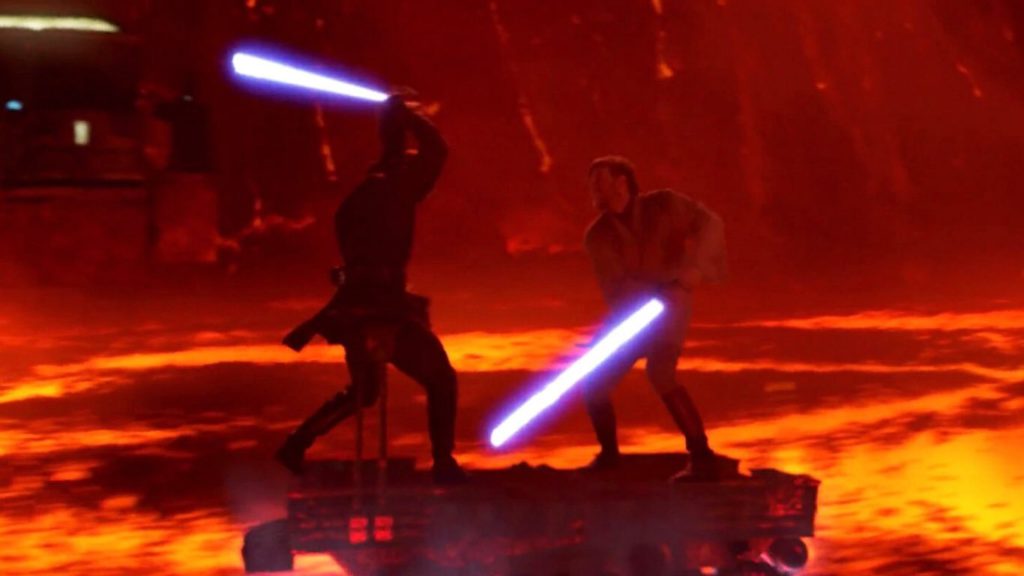
Actors Hayden Christensen (Anakin) and Ewan McGregor (Obi-Wan) trained in fencing and fitness for two months to prepare for their epic battle, rehearsing their scene with stunt coordinator Nick Gillard. Their practice paid off, as the aggressive speed at which Anakin and Kenobi engage in the duel is actually the speed in which it was filmed. The film footage of the scene was not artificially increased at all.
A Fiery Wasteland
The volcanic hellscape that we see on the planet Mustafar is visually striking, albeit emotionally horrifying. The constant heating and eruption on the planet’s surface make for an ideal location for a fight to the death. The images of the volcanic eruption on Mustafar come from actual footage of a real volcanic eruption. Mt. Etna was erupting at the time of the film’s production, so a small film crew visited the Italian volcano to record footage that was used in the film.
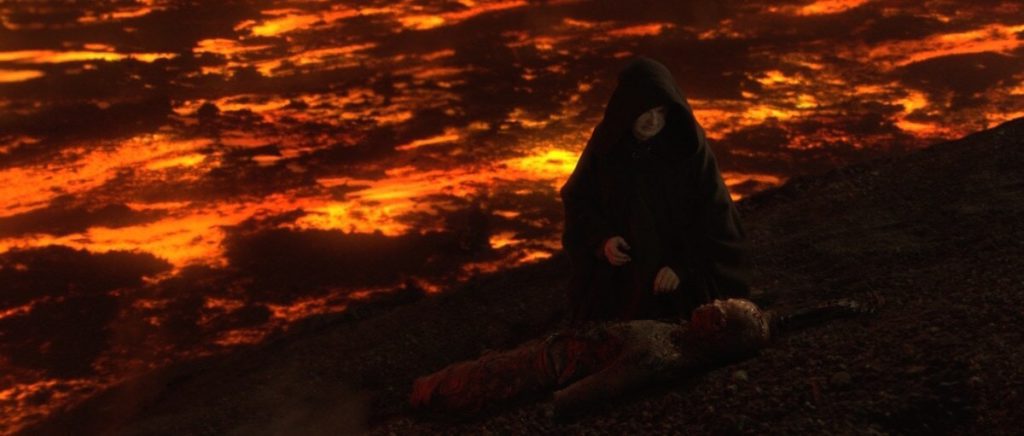
During the showdown, when Obi-Wan finally accepts that Anakin is lost to the Dark Side, he screams at his former Padawan in anger, saying “You were the Chosen One!” Those words weren’t lost on George Lucas. The planet’s name Mustafar comes from the Arabic origin Mustafa, which translates to “The Chosen One” or “The Preferred One.”
Fun Fact: The battle on Mustafar marks the first (and only) time that audiences see two lightsabers of the same color fight and hit each other in combat.
Becoming Darth Vader
Technically speaking (for Star Wars nerds like me) Anakin’s psychological and emotional transformation into Darth Vader happened before he ever donned the iconic suit. Shades of Anakin’s allegiance to the Dark Side began to manifest when he killed Count Dooku near the beginning of Revenge of the Sith. His transformation continued over the course of several chilling conversations with Chancellor Palpatine, and culminated with his slaughter of many younglings (Star Wars-speak for “children”) in the Jedi temple on Coruscant. By the time Anakin and Obi-Wan fight on Mustafar, Anakin is already fully lost to the Dark Side.
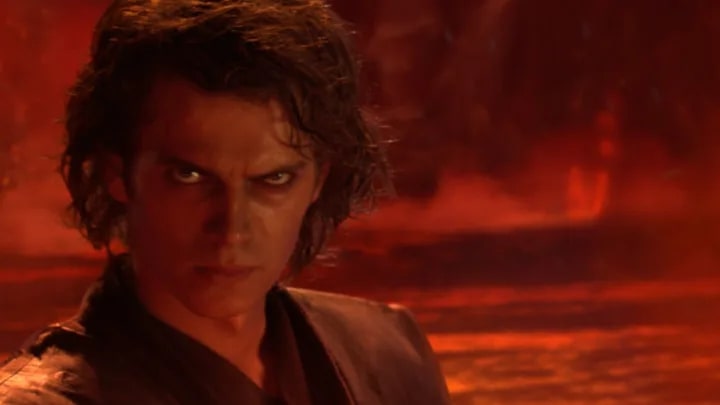
Anakin’s physical transformation into Darth Vader proves to be the final step in the process – a direct result of his injuries sustained while fighting Obi-Wan. When Vader takes his first steps in the new suit, his movements look clumsy and awkward. That was entirely by design. George Lucas deliberately made the Darth Vader suit top-heavy, adding weight to the chest and helmet. The extra weight caused actor Hayden Christensen as Vader to appear awkward and uncomfortable in the film.
While filming Revenge of the Sith, Christensen was not intended to wear the iconic suit. Being six feet tall, Christensen was over a half-foot shorter than David Prowse, who has worn the suit for most of Vader’s film appearances. But Christensen fought passionately to get the chance to fill Darth Vader’s suit.

As Christensen said in 2005 “They were really nice to allow me to get into the Vader suit because they could have just put some really tall guy in it and gotten away with it. But I begged and pleaded, so they built a suit that actually fit me. The process was really interesting as they had to make a big muscle suit so that I would physically fill the costume out, you know, one of those sumo wrestling suits that you get into at a fair, which wasn’t very intimidating at all. To finally have the polished helmet and all the nice leatherwork on was pretty interesting.”
Christensen went on to say “It was a heavy costume, and I was walking in five-inch stilts to compensate for the height difference. It was not the most comfortable thing to have to spend more than 10 minutes in.”
Chancellor (and Emperor) Sheev Palpatine
Always the Emperor to those who grew up with the original Star Wars trilogy, Chancellor Sheev Palpatine has over 28 minutes of screentime in Revenge of the Sith – far more than any other primary villain in a Star Wars film. In fact, his time in Revenge of the Sith alone almost matches his combined screen time from all his other film appearances (35 minutes over the course of five other films, including Episodes I, II, V, VI, and IX).
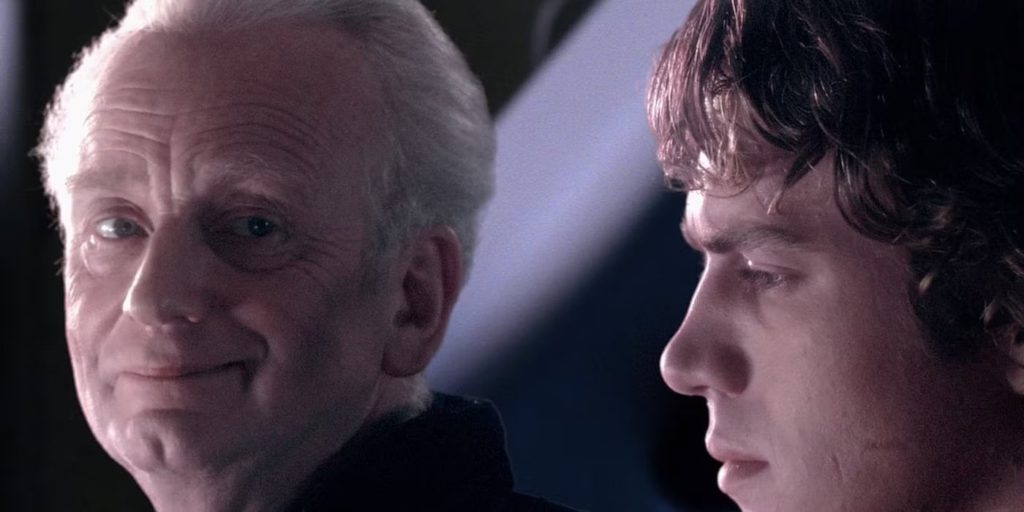
Legendary Scottish stage and screen actor Ian McDiarmid was cast as Palpatine in every Star Wars film in which he appears, with the exception of Episode V – The Empire Strikes Back, which was the first film (in terms of release date) in which the Emperor appears. In The Empire Strikes Back, the grainy holographic depiction of Palpatine was portrayed by actor Marjorie Eaton under heavy makeup, and was voiced by actor Clive Revill. During filming for Revenge of the Sith, George Lucas – famous for “updating” his completed Star Wars films – recorded new footage for the Emperor’s role in The Empire Strikes Back, and released a special edition of the film in 2004, complete with McDiarmid in the role he made iconic.

Shockingly, McDiarmid was only 39 years old when he first portrayed the Emperor in Return of the Jedi, even though he looked about a century old in the film. I guess that’s what allegiance to the Dark Side of the Force will do to a person!
Easter Eggs
What Fun Facts article would be complete without acknowledging a few hidden Easter Eggs? Enjoy these little nods.
Baron Papanolda (aka George Lucas)
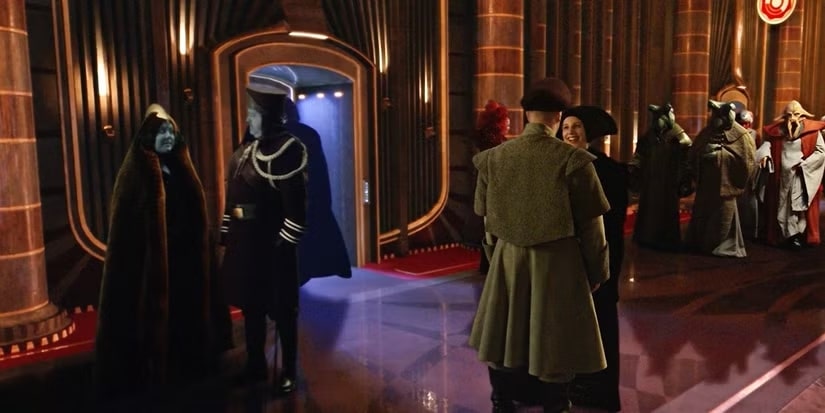
George Lucas is the heart and soul of the Star Wars Galaxy, despite the fact that he never appeared in any of the films…until Revenge of the Sith. Lucas finally took the plunge when he appeared on-screen as Baron Notluwiski Papanoida. The blue-skinned politician from the planet Pantora is briefly spotted at the Galactic Opera House when Anakin meets with Chancellor Palpatine. And the fellow Pantoran standing next to him is one of Lucas’ daughters! This was Lucas’ one and only appearance in a Star Wars film, though the character of Baron Papanoida has appeared in additional stories from the Star Wars expanded universe.
The Imperial Logo
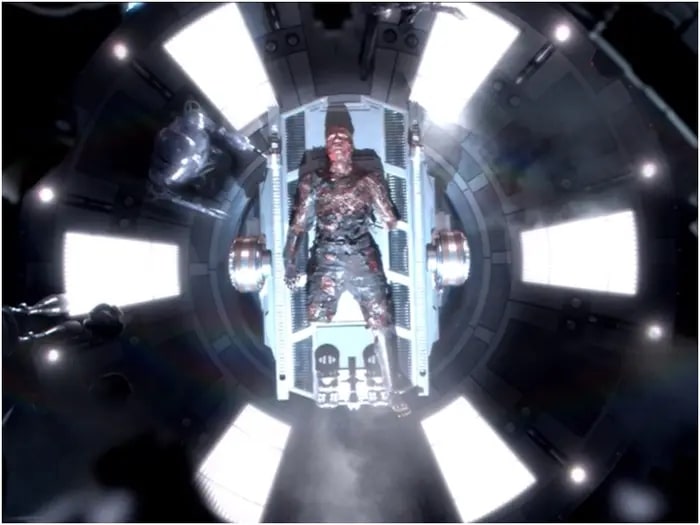
The birth of Darth Vader and the unveiling of Emperor Palpatine symbolize the birth of the Empire itself, and the Imperial logo makes an appearance in the final minutes of the film. In the scene where Anakin Skywalker undergoes surgery to complete his physical transformation to Darth Vader, a birds-eye camera angle shows Anakin on the operating table. Specifically spaced segments of lighted floor extend from the table location, resembling the Imperial logo.
The Millennium Falcon
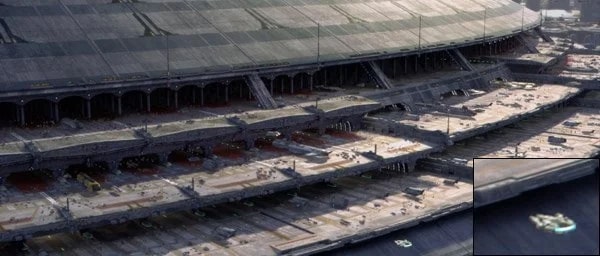
The Millennium Falcon is a fan favorite, and is as much a character in the Star Wars Galaxy as any sentient being. The “fastest hunk of junk in the galaxy” has a long and storied history which began well before Han Solo took the helm. During the events of Revenge of the Sith, the Falcon – known then as the “Stellar Envoy” – participated in the Battle of Coruscant (the battle in which Anakin and Obi-Wan rescue Chancellor Palpatine from Count Dooku). After the conclusion of the battle, sharp-eyed viewers can see the famous ship approaching a landing pad on Coruscant, nearby to where Anakin and Obi-Wan return with the chancellor.
May these fun facts make you strong with the Force at your next cocktail party! Where does Star Wars: Episode III – Revenge of the Sith rank on your list of Star Wars films? Let me know what you think by starting a conversation on social: Instagram Facebook X
Sources:
Star Wars: Episode IV – Revenge of the Sith – IMDB
10 Easter Eggs You Missed In Star Wars Episode 3 – Dan Peeke, Screen Rant, March 27, 2020
